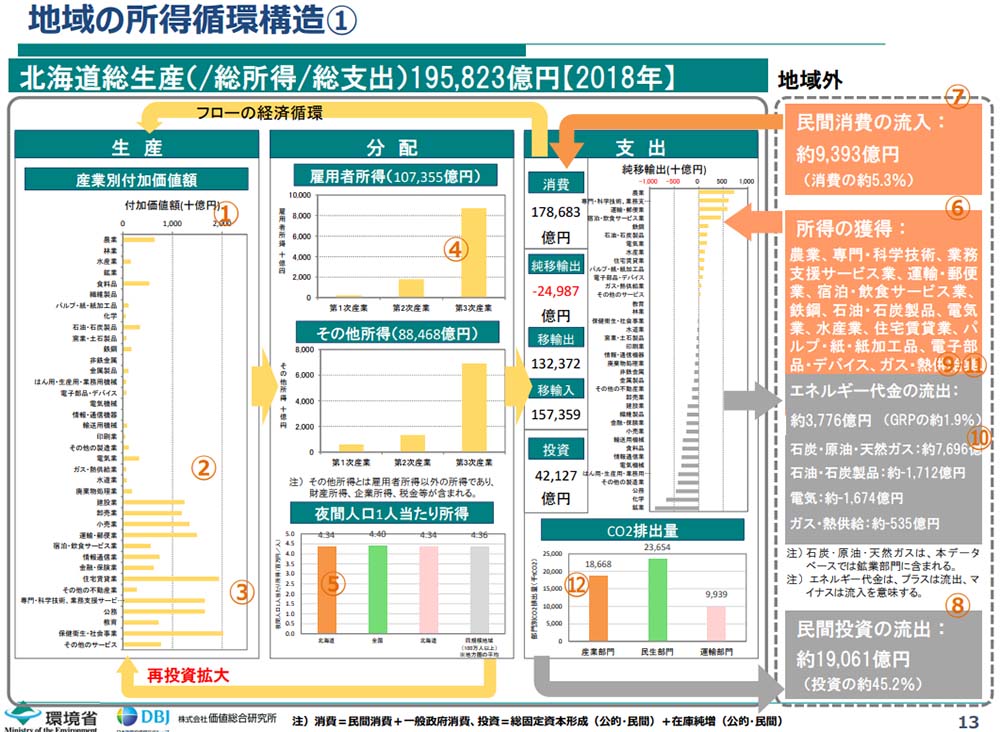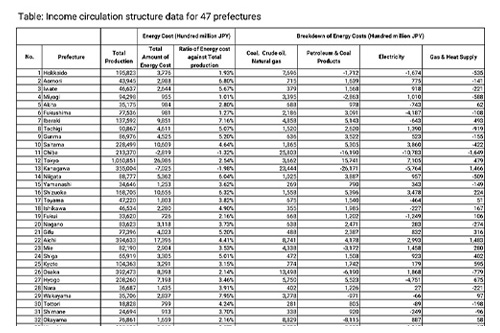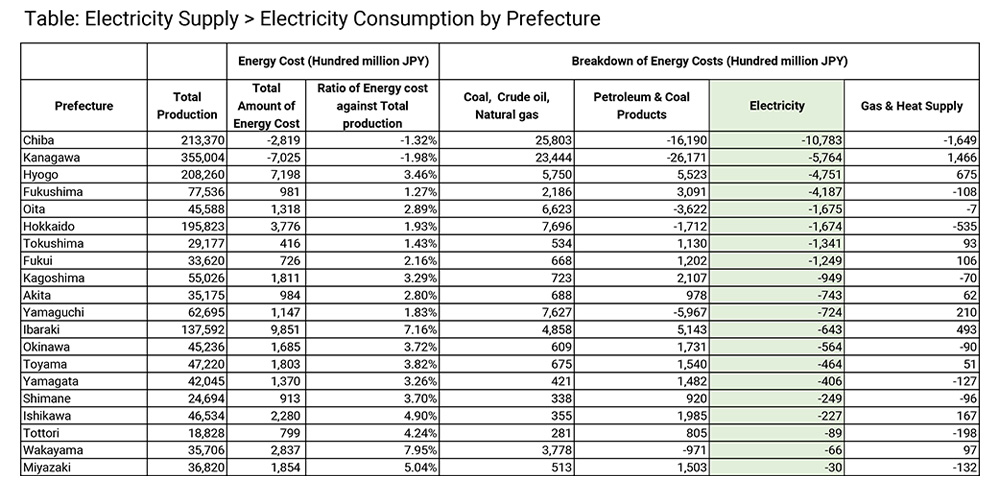PV column
consulting
2022/06/21
Income structure and energy expenditures in regions in Japan
The Ministry of the Environment has released a tool called “Regional Economic Circulation Analysis”.
You can calculate each prefecture’s income structure, energy-related expenditures, etc. using the 2018 version of the “Automatic Regional Economic Circulation Analysis Tool” which can be downloaded from this link. (80 pages per pref.)
As an example of the download calculation, here is the page on income cycle structure (1) for the region of Hokkaido (page 13/80).
Please refer to the manual (Japanese only) that can be downloaded from the site for information on how to operate the tool.
https://www.env.go.jp/content/900495235.pdf
We have calculated data for all 47 prefectures using this tool and compiled the data for energy-related items. (If you need a PDF file of the data for all 47 prefectures, please contact us.)
The data analysis tool calculated that total production in 2018 was 556 trillion JPY (4,120 billion USD), and the amount of energy outflow was 18.2194 trillion JPY (135 billion USD), and 3.28% of total production. 16.4748 trillion JPY of of this outflow of energy payments was used to purchase coal, crude oil, and natural gas. We consider this to be an error in the aggregation of the respective data, as the total for electricity and gas/heat supply should originally have a value of +/- zero.
In total, 20 prefectures in each region supply more electricity than they consume, and 27 prefectures supply the shortage from other prefectures.
Only two prefectures (Kanagawa and Chiba) had inflows that exceeded expenditures on energy bills, and both petroleum and coal products and sales of electricity resulted in a surplus balance, exceeding expenditures on coal, crude oil, and natural gas. The trend of large expenditures on coal, crude oil, and natural gas is a trend that can be seen throughout Japan.
The spread of solar and other renewable energies is expected to reduce expenditures on coal, crude oil, and natural gas, which account for more than 3% of Japan’s gross domestic product, or 18 trillion yen annually, and to enable the continued use of precious fossil fuels for other purposes instead of using them as a power source.





